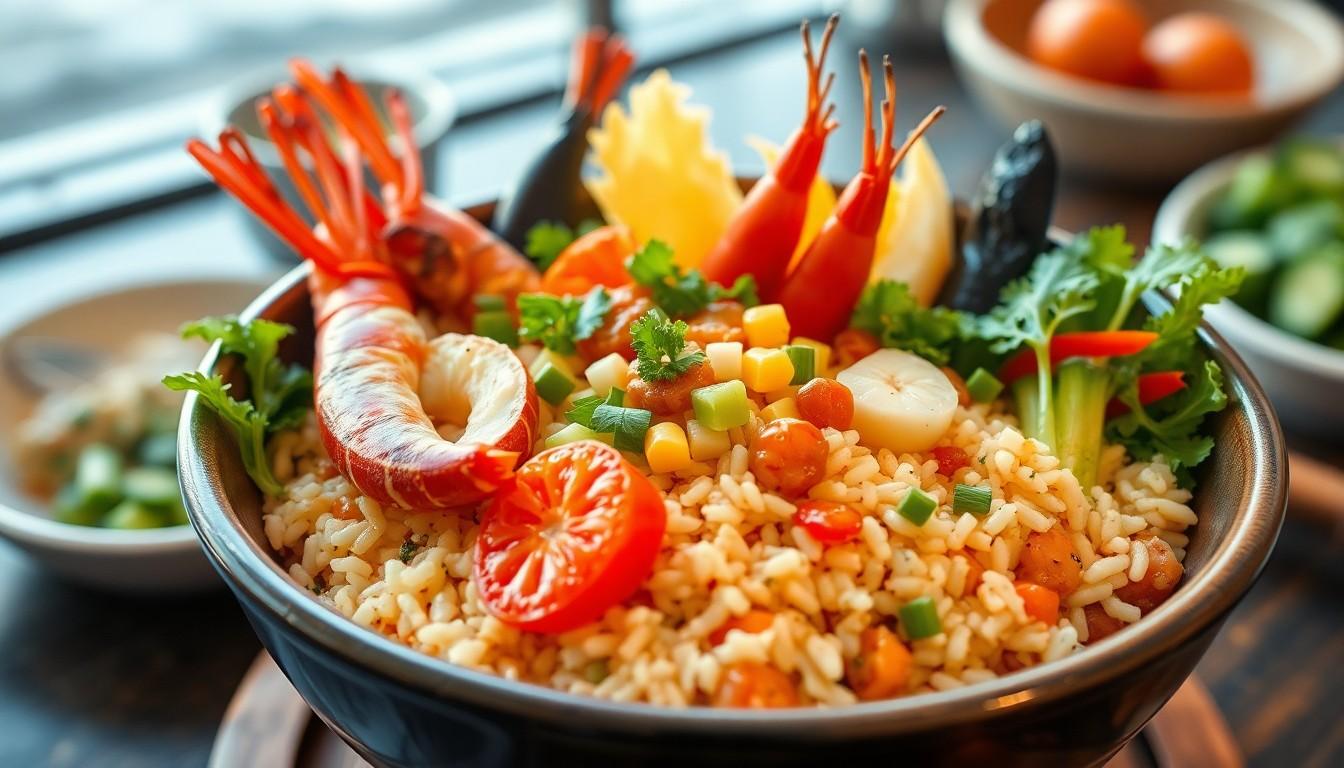Imagine biting into a dish that dances on your taste buds, leaving you to wonder if it’s a culinary masterpiece or a salty sea adventure. Hulgbap, a lesser-known gem in the world of cuisine, has folks scratching their heads and reaching for a glass of water. Is it salty? Well, that’s the million-dollar question.
Overview of Hulgbap
Hulgbap is a traditional dish known for its distinctive taste and preparation methods. Its ingredients often include rice, seafood, and vegetables, which contribute to its unique flavor. Many people describe the texture as rich and hearty, making it a satisfying meal.
Hulgbap often features various spices and seasonings, which may influence its overall taste. Salt is a common ingredient in many recipes, but the exact level of saltiness can vary based on individual preparations. Some cooks may emphasize the salty flavors more than others, leading to different experiences when tasting the dish.
Different regions might present Hulgbap in unique styles. In coastal areas, fresh seafood might enhance the dish’s umami notes, possibly balancing any saltiness. Urban variations could focus on richer flavors, highlighting other seasoning elements alongside the potential saltiness.
Taste testers often report a complex flavor profile, indicating that while salt plays a role, it does not dominate the experience. Sweet, savory, and umami components create a holistic flavor that’s hard to pinpoint. When considering Hulgbap, one should be prepared for a medley of tastes rather than a singular salty note.
Overall, Hulgbap’s flavor can be described as layered. Salty notes may emerge prominently in specific versions, but they’ll coexist with distinct sweetness and savory undertones. Culinary enthusiasts continue to explore this dish’s versatility, revealing a broader spectrum of flavor possibilities.
Understanding the Taste Profile

Hulgbap presents a unique flavor experience shaped by its ingredients and cooking techniques. Different elements work together to create a balanced taste.
Primary Ingredients
Rice forms the base of Hulgbap, offering a hearty foundation. Seafood, often freshly sourced, enhances umami flavors, making the dish more complex. Vegetables provide freshness and texture, contributing to its overall appeal. Various spices and seasonings, including salt, elevate flavor profiles, but their impact varies with each recipe. Individual preferences also play a role in determining salt levels, as some enjoy a more pronounced taste while others prefer subtlety.
Cooking Methods
Methods of preparation significantly influence Hulgbap’s flavor. Steaming allows flavors to meld without losing moisture, creating a rich taste. Stir-frying introduces a slight smokiness and caramelization, enhancing sweetness. Regional variations also reflect different cooking styles. Coastal areas may favor methods that highlight fresh seafood, while urban areas often incorporate innovative techniques for richer flavors. Each cooking method impacts the dish’s overall saltiness and texture, offering a diverse culinary experience.
Is Hulgbap Tastes Salty?
Hulgbap exhibits varying saltiness, influenced by numerous factors. Ingredients play a critical role, with dishes featuring different seafood types and vegetables impacting the overall taste. Preparation methods also contribute to the saltiness. Steaming retains natural flavors, while stir-frying can create deeper tastes through caramelization.
Factors Influencing Saltiness
Several factors impact the saltiness of Hulgbap. Ingredient selection, particularly seafood and vegetables, introduces different flavor levels. Cooking techniques shape the flavor profile—steaming melds flavors without losing moisture, enhancing the natural tastes. Regional variations further affect seasoning choices. Coastal areas often emphasize fresh seafood, offering a more pronounced umami, while urban styles might introduce unique seasonings for richer profiles. Individual preferences among home cooks and chefs also determine how salty the dish becomes.
Comparison with Other Dishes
Saltiness in Hulgbap compares uniquely with similar dishes. For instance, stews tend to emphasize salt for preservation and flavor, while stir-fried rice dishes often balance saltiness with sweetness. Unlike heavily salted options, Hulgbap showcases a more nuanced approach to flavor. The overall taste experience leans on a harmony of sweet, savory, and umami elements. Culinary enthusiasts note that this layered profile sets Hulgbap apart from others, making it a distinctive option.
Nutritional Aspects of Hulgbap
Hulgbap offers a unique combination of nutrients derived from its primary ingredients, including rice, seafood, and vegetables. The balance of these elements contributes to its overall nutritional profile. Rice provides carbohydrates, serving as an essential energy source. Seafood adds proteins, healthy fats, and omega-3 fatty acids, which are beneficial for heart health.
Vegetables play a critical role by contributing vitamins, minerals, and fiber. Ingredients like spinach, carrots, and peppers not only enhance texture but also boost the dish’s nutrition. Varied regional recipes might incorporate local vegetables, enriching the dish further.
Salt is commonly included in the preparation, serving to enhance flavor. Individual recipes, however, determine the saltiness level, resulting in variations across different regional styles. Coastal versions tend to incorporate saltier seafood, promoting an umami taste, while urban iterations may focus on balanced flavors.
Serving sizes impact overall salt intake, making it essential to consider portion control. Nutritional benefits should be evaluated alongside the taste experience. Culinary enthusiasts may find that the complex flavors of Hulgbap lead to greater satisfaction and enjoyment.
Hulgbap’s preparation methods influence nutrient preservation and flavor intensity. Steaming retains moisture and nutrients, whereas stir-frying can enhance the dish’s sweetness through caramelization. Each method affects not only the texture but also the overall health benefits.
Considering the dish’s evolving nature, experimentation with ingredients and preparation styles can further enhance its nutritional value. Those seeking a heart-healthy meal might explore recipes that reduce added salt while maintaining flavor. This ongoing exploration continues to highlight Hulgbap’s place in contemporary culinary discussions.
Conclusion
Hulgbap stands out as a dish that offers a rich tapestry of flavors rather than a singular salty taste. Its unique combination of ingredients and cooking methods creates a complex profile that balances sweet, savory, and umami elements. While salt is a component, it doesn’t overshadow the dish’s overall experience.
Culinary enthusiasts are encouraged to explore the various regional styles and preparation techniques that further enhance its flavor. This exploration not only reveals the dish’s versatility but also highlights its nutritional benefits. Hulgbap is more than just a meal; it’s an invitation to experience a diverse culinary journey.

